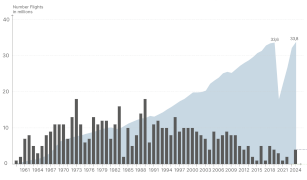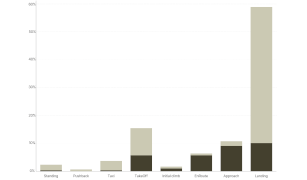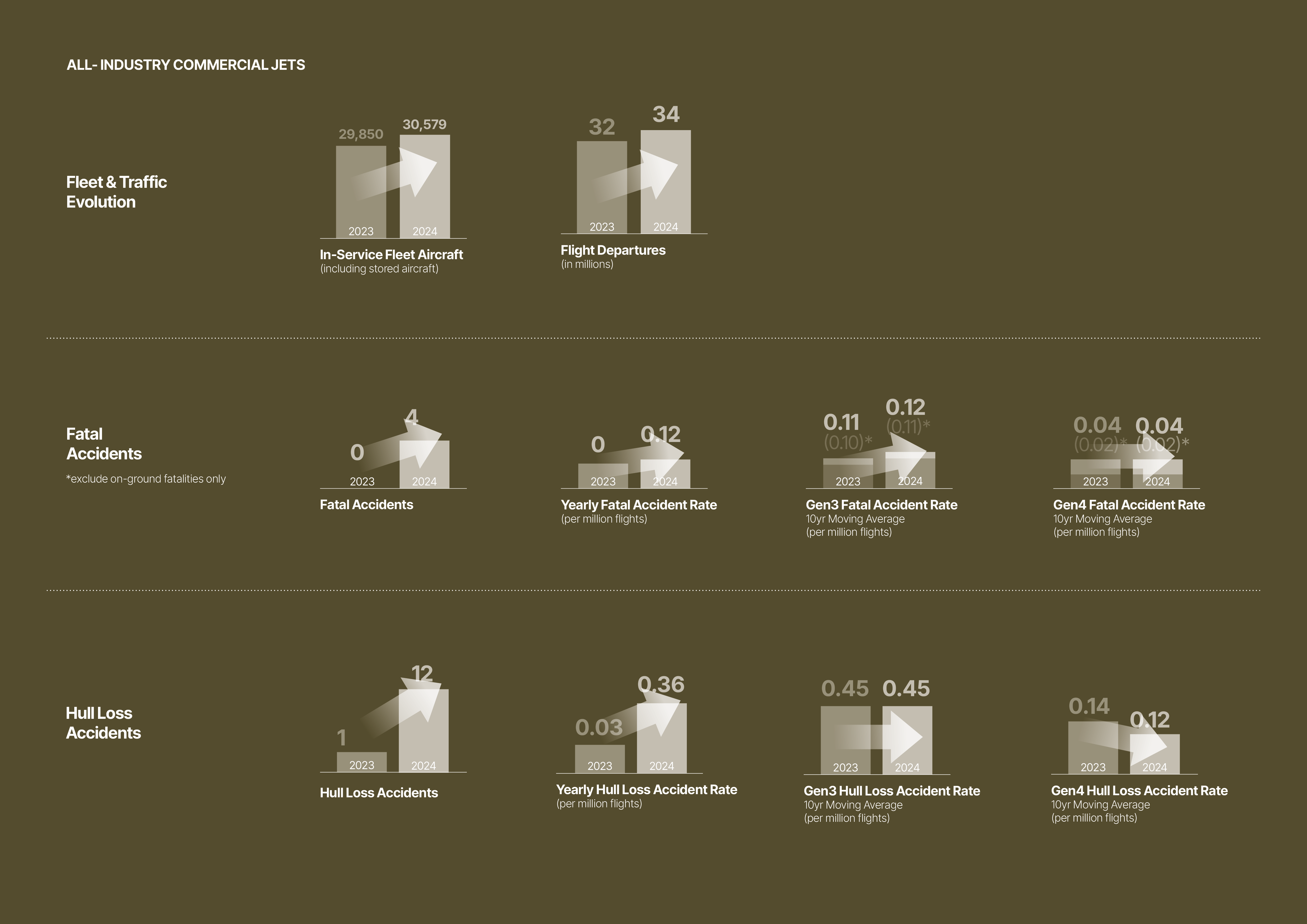A Statistical Analysis
of Commercial Aircraft
Accidents 1958-2024
The number one priority of Airbus is the continued safe transport of everyone and everything that flies aboard an Airbus product. No accident is ever acceptable. That is why, when accidents do unfortunately occur, Airbus does its utmost to learn from what happened and takes whatever actions are necessary to improve safety. This resource on accident statistics is part of that effort, by sharing the Airbus analysis of the historical aspects and current status of aviation safety for commercial jet aircraft.
This analysis clearly demonstrates that our industry has achieved huge improvements in safety, especially over the last two decades. It also underlines the significant contribution technology has made in ensuring that taking a flight in a commercial jet aircraft is a low-risk activity.
Accident Statistics
Generations of Jet

Analysis of the evolution of technology and how this helped improve aviation safety
FATAL ACCIDENTS

Analysis of fatal accident rates related to events in which one or more people is fatally injured
HULL LOSSES

Analysis of hull loss events in which an aircraft is destroyed or damaged beyond economic repair
Traffic and Accidents in 2024
In 2024, commercial jet traffic recovered to pre-pandemic operational levels, reaching almost 34 million flights, matching 2019 flight volumes. However, this year’s recovery was marked with several fatal events.
Resurgent demand in both passenger and cargo sectors drove the recovery of commercial air transport volume to levels prior to the Covid-19 crisis. Compared to 2023, which recorded no fatal accidents and only one hull loss, 2024 saw 12 hull losses and four accidents with fatalities.
A runway collision involving an A350 and Dash-8 turboprop occurred in the first days of 2024, resulting in five fatalities on the Dash-8. All passengers on the A350 were safely evacuated. In November, a B737-400 freighter aircraft collided with terrain during its approach, causing one fatality. An A220 diverted mid-flight due to reported cabin smoke, with one fatality among seventy-nine persons onboard.
In the last days of 2024, a 737-800 aircraft made a gear-up landing, slid past the end of the runway, and collided with the ILS localizer antenna array installed on a concrete platform, causing 179 fatalities among the 181 people on board. Late in December, an Embraer 190 aircraft crashed after declaring an emergency. The cause of the emergency remains under investigation at the time of publishing and has yet to be classified.
The aviation industry’s 2024 performance underscores the critical importance of continuous safety improvements and rigorous investigation protocols, leaving no room for complacency. While the year marked a significant operational recovery to pre-pandemic levels, the number of fatal accidents recorded in 2024 reveals persistent challenges in maintaining, and continuously improving, the aviation safety record year to year. Addressing these challenges demands enhanced training, technological advancements, and collaborative international efforts to mitigate risks in commercial air transport.
It is also important to recognize that safety statistics from a single year may not accurately reflect long-term trends. This statistical analysis of commercial aviation accidents uses accident rates calculated as a 10-year moving average to provide a more consistent comparison across industry recovery and growth and cycles.




